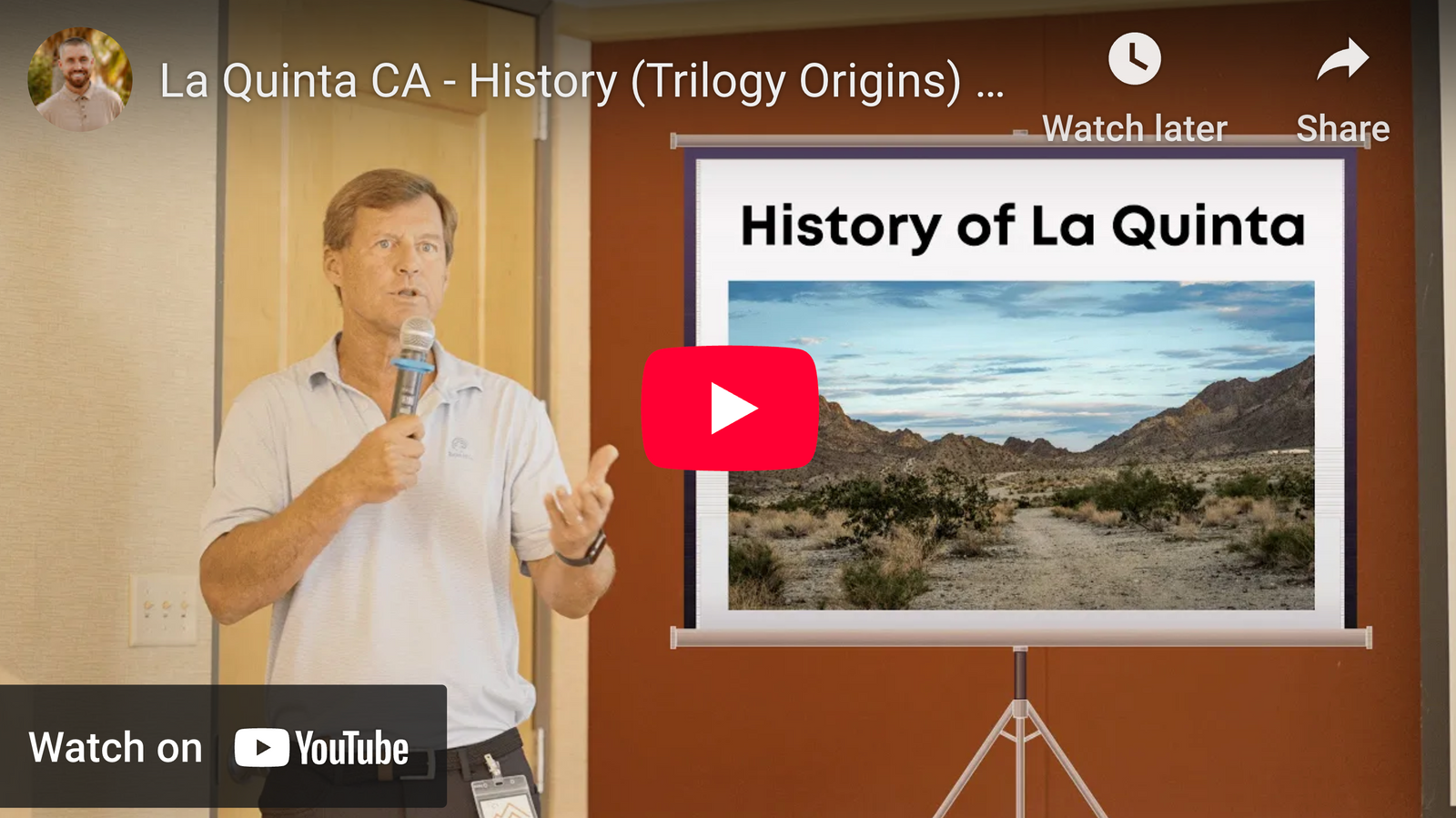How Trilogy La Quinta Was Created: A Blend of Engineering and Vision

The development of Trilogy La Quinta is a fascinating story of innovation, meticulous planning, and respect for the local environment and history. The video provides an insightful journey into how this vibrant community came to life, detailing the challenges and triumphs faced by developers and engineers. Here's how Trilogy La Quinta transformed from agricultural land into a thriving residential community.
🌟 The Vision
Create a dynamic, active adult community that blends luxury living with natural beauty. The project began in the late 1990s, with Shea Homes spearheading its development. The planners aimed to incorporate the stunning Santa Rosa Mountains and rich local history into the community's design.
📋 Overcoming Early Development Challenges
Infrastructure Development: Essential infrastructure like water and power must be addressed before grading begins. The area's extensive irrigation systems, built for agriculture in the 1930s and 1940s, required modification and relocation, including Bureau of Reclamation facilities and pipelines.
Flood Management: The proximity of the Santa Rosa Mountains meant dealing with significant flood risks. To protect the development, a levee system was reinforced and certified.
Environmental Considerations:The land’s unique geology and proximity to archaeological sites posed additional constraints. Developers worked closely with tribal authorities to ensure the preservation of cultural artifacts.
🏗️ Master Planning and Phased Construction:
The Trilogy development followed a phased approach, ensuring quality and minimizing disruption to future residents:
Phase 1: Laying the Foundation: Construction began with relocating pipelines and developing access roads. Madison Avenue and other significant streets were restructured to support the project.
Golf Course and Clubhouse: The golf course and clubhouse were completed early in the project to attract buyers. These facilities showcased the community's luxury lifestyle.
Efficient Grading and Housing Layout: Engineers ensured proper grading for efficient water drainage during storms, a feature that proved invaluable during events like Hurricane Hilary in 2023.
🌍 Preserving Cultural and Environmental Heritage:
The development team encountered numerous archaeological discoveries, including remnants of Cahuilla settlements and tools from prehistoric Lake Cahuilla. These findings added historical significance to the project and required careful coordination with local tribes and historians.
The surrounding mountains were also celebrated as part of the community’s identity. Developers ensured that hiking trails and natural habitats remained accessible to residents.
🎉 The Final Outcome
By 2009, Trilogy La Quinta had evolved into a well-rounded community with over 1,200 homes, a championship golf course, and a 30,000-square-foot clubhouse (44:28). The developers’ focus on sustainability, quality, and community engagement ensured its long-term success.
Lessons from Trilogy La Quinta's Development
The creation of Trilogy La Quinta is a masterclass in balancing modern development with historical and environmental preservation. From managing flood risks to honoring the cultural legacy of the land, every step reflected thoughtful planning.
Key Takeaways
Sustainable Development: Proper grading and water management are critical in desert environments.
Cultural Respect: Working with tribal communities ensures that development preserves local heritage.
Phased Construction: Dividing a project into phases ensures high quality and minimizes disruption.

